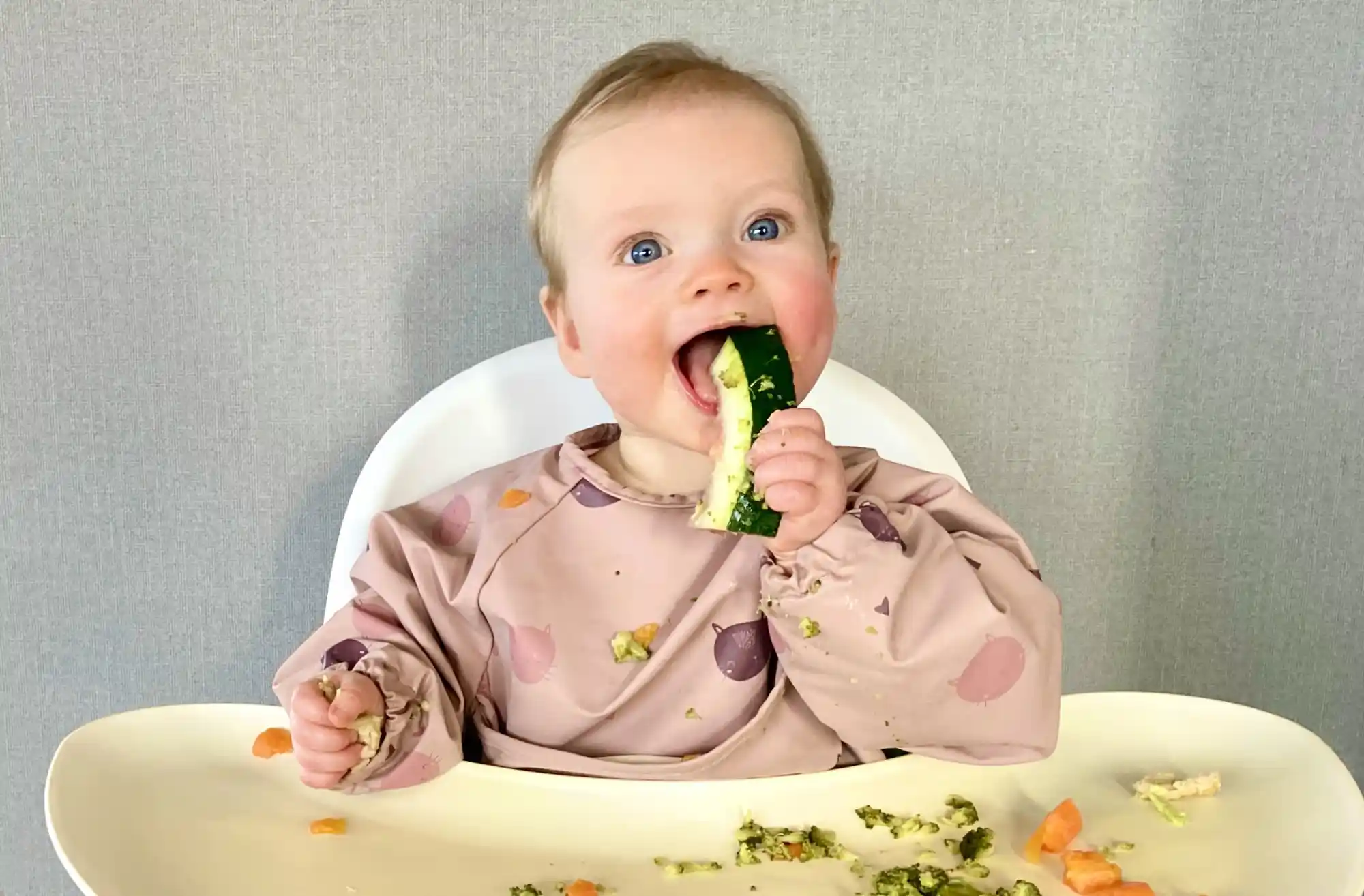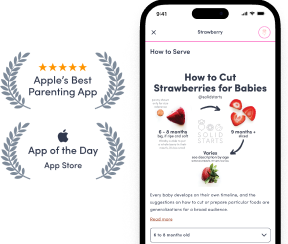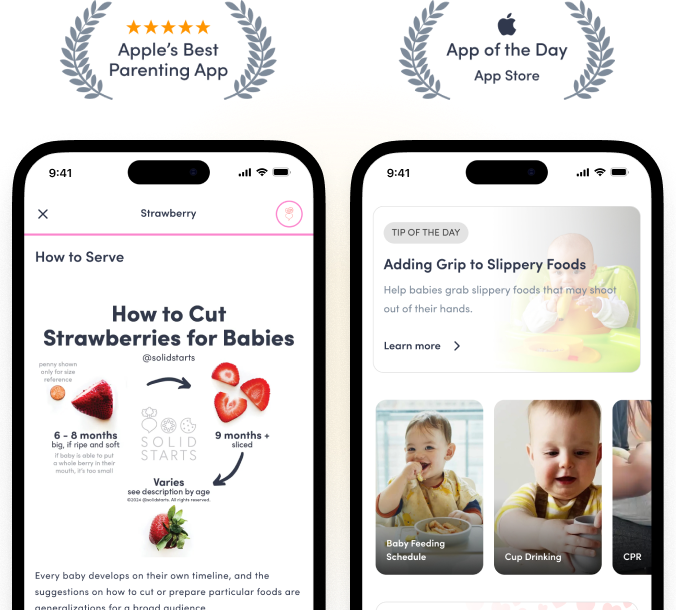📚Celebrate the release of our new book with 25% off our All Access app subscription. Start now
Talking to Family: Benefits of Baby-Led Weaning

Letting baby self-feed is a novel concept for many people. The culture of spoon-feeding permeates many walks of life. However, there are many known benefits to letting babies self-feed.
Research shows the optimal time to introduce textured food is 6-9 months old. Introducing chewable food early builds oral-motor skills and sensory tolerance, leading to a decreased likelihood of texture aversion, chewing issues, and picky eating
Allowing baby to self-feed allows them more opportunities to practice listening to and interpreting hunger and satiety cues, which is a skill they’ll continue to practice throughout childhood and may ultimately help them become a more intuitive and competent eater. Additionally, by allowing baby to feed themselves, it’s less likely that baby will be overfed past their comfort level.
Large-scale, randomized control trials have shown no difference in reported choking incidents between babies weaned via purées, and babies weaned via finger foods. No research suggests spoon-feeding is necessary. Research also suggests that early introduction of finger food may help baby learn to be a safer eater sooner and that a diet with firmer textures enhances bone and muscle growth, which could indirectly lead to better chewing ability.
Spoon-feeding textureless food does little for oral-motor development and can perpetuate a suck-to-swallow oral-motor pattern that isn’t ideal or safe for managing chewable foods. Babies know how to suck and swallow, but they need to learn how to move food to the side of their mouth and chew it, a skill that develops from stimulating the tongue lateralization reflex on the sides of the tongue. Research shows that it is safe to allow 6-12-month-old babies to practice chewing with developmentally appropriate foods and that chewing helps build mature oral-motor skills.
Between 6-9 months, babies have strong protective reflexes against choking, but these reflexes begin fading after 9 months of age. Which means it’s actually safer and easier for a 6-9-month-old baby to start on finger foods than it is for an older baby or toddler.
When it comes to food sizes, bigger is actually safer for the youngest babies. A baby’s windpipe is about the size of a drinking straw—a large piece of chicken isn’t going to get stuck there, but a blueberry might. Plus, a baby’s brain is much more likely to feel and recognize a big piece of food rather than a small one. Even if a small piece of food is bitten off the large piece of chicken, research shows that the body is primed to spit out or safely swallow that piece of food while actively engaged in chewing.
Research shows that the more a child eats the same foods as the family, the more likely they will eat and enjoy those foods.
Research shows that when food is placed in the mouth by someone else other than the eater, the risk of choking increases.
Research shows that baby’s nutritional needs can be met with a baby-led weaning approach when family foods are made in a baby-friendly manner, practicing sound food safety practices, and opting for iron and zinc-rich foods that meet baby’s nutritional needs.
Certain baby foods, including infant rice cereal, can contain heavy metals like arsenic. While heavy metal contamination in foods is an environmental and political issue beyond any one person’s control, having varied, whole foods (as with a baby-led weaning approach) helps reduce the likelihood of overconsumption of any one food, and any consequent downsides to that food, including excess heavy metal intake.
Bringing baby to the table from the beginning of their feeding journey allows them to participate in family meals and their communal food culture. Eating with the family also allows baby increased opportunities to experience a wider variety of foods, textures, flavors, and food allergen exposures, earlier on.
Baby-led weaning can make feeding baby more accessible, convenient, and even more affordable when traveling, visiting friends and family, and dining out, as it allows for more flexibility and less need to pre-purchase and pre-pack purées.
Ready to get started? Learn more about baby-led weaning or visit our First Foods® database for information on how to cut and serve any given food. Lastly, check out Solid Starts Compass℠, our guided app experience to help you navigate first bites and beyond.
Ready to get started?
Download the app to start your journey.
Expert Tips Delivered to Your Inbox
Sign up for weekly tips, recipes and more!


